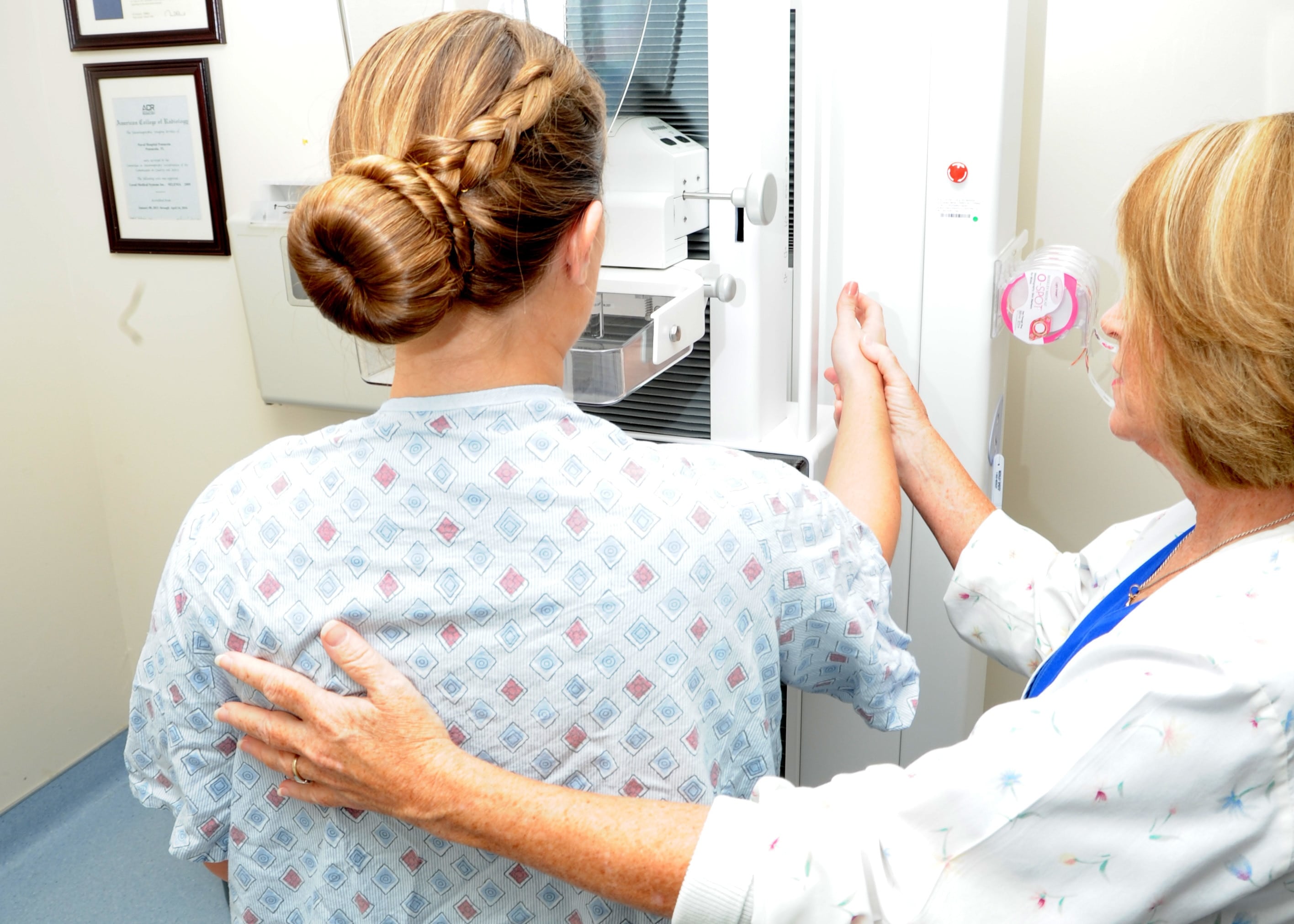A bipartisan group of senators is urging the Pentagon to revamp breast cancer screening options for Tricare beneficiaries.
Digital Breast Tomosynthesis, known as 3D mammography or DBT, was initially approved by the U.S. Food and Drug Administration in 2011 and is dramatically becoming more common. According to a study published in June in the peer-reviewed journal JAMA Internal Medicine, 3D mammography screening increased from 13 percent of screening examinations to 43 percent between 2015 and 2017.
Additionally, 3D mammography is the standard of care in all 50 states for breast cancer screening and examines each layer of breast tissue, the lawmakers claim.
But Tricare has yet to cover this preventative screening as a permanent benefit and instead, employs two-dimensional imaging that “has inherent limitations in detecting cancer" and provides only front and side images, according to the senators.
The Defense Health Agency, which oversees Tricare, told the Military Times the agency is moving toward at least temporarily covering 3D mammograms if patients receive prior approval from their providers. However, the change isn’t expected to take effect until 2020 and doesn’t mean Tricare will permanently cover the screening in the future.
The lawmakers, spearheaded by Sen. Martha McSally, R-Ariz., sent a letter on Tuesday to Assistant Secretary of Defense for Health Affairs Thomas McCaffery, raising their qualms with Tricare’s current breast cancer screening coverage.
“Currently, TRICARE is the only national payer that does not cover preventative screening with DBT, creating a lower standard of care for the women who serve in our armed forces,” the lawmakers wrote. “It is only upon discovering a lump in which TRICARE covers 3D mammograms.”
RELATED

According to the letter, more than 250 peer reviewed clinical studies indicate that 3D mammography detects cancer sooner and scales back the likelihood of call backs or additional screening.
Breast cancer will be the second leading cause of U.S. cancer deaths among women in 2019, according to an estimate from the American Cancer Society. The organization predicted 41,760 deaths — 15 percent of all cancer-related deaths — would stem from breast cancer this year.
The American Cancer Society also claims that women initially diagnosed with breast cancer before it has spread outside the breast are 99 percent as likely as women who haven’t been diagnosed with cancer to live the next five years of their lives. However, that number drops to 27 percent when the cancer has spread to parts of the body like the lungs upon initial diagnosis.
As a result, catching the cancer early is key.
The lawmakers wrote that 93 percent of women between the ages of 40 and 74 have insurance coverage and reimbursement for 3D mammograms either through Medicare, Medicaid or through private insurers like United and Cigna. Likewise, the Department of Veterans Affairs includes DBT in its medical benefits package.
“Without coverage from TRICARE, many servicewomen are unable to receive the optimal care to which other women have access, or are forced to pay out-of-pocket for the exam,” the lawmakers wrote.
“We ask that the [Military Health Service] address this disservice to those who protect our country, and we urge TRICARE to promptly implement positive coverage for DBT screening,” the lawmakers said.
Despite the increase in 3D mammograms, the American Cancer Society and the U.S. Preventative Services Task Force have yet to recommend 3D mammography as the primary screening method for breast cancer.
The Defense Health Agency, which oversees Tricare, did not immediately provide comment but told the Military Times following initial publication that some changes are underway.
“TRICARE generally follows the U.S. Preventive Service Task Force recommendations for population-based screenings when establishing policy for preventive care,” a Defense Health Agency spokesperson said in a statement to the Military Times.
The spokesperson said the agency has approved provisional coverage of 3D mammograms, and said Tricare is working with its contractors to implement coverage for 3D mammograms. The change is expected to take effect on Jan. 1, 2020, and fully implemented in early 2020.
This means that 3D mammograms can be covered by Tricare for up to five years — if a patient has worked with their Tricare-authorized provider to receive prior authorization for the screening — while 3D mammogram’s effectiveness is monitored.
This is not a permanent benefit, and Tricare can pull 3D mammograms from the provisional coverage program at any time. However, before the five-year window expires, Tricare will decide if it will become a permanent benefit or not.
This change was already in progress prior to the lawmaker’s letter, the Defense Health Agency said.
In addition to McSally, the letter was also signed by the following senators: Kyrsten Sinema, D-Ariz.; Marsha Blackburn, R-Tenn.; Shelly Moore Capito, R-W.Va.; Susan Collins, R-Maine; Kirsten Gillibrand, D-N.Y.; Kamala Harris, D-Calif.; Cindy Hyde-Smith, R-Miss.; Amy Klobuchar, D-Minn., Jeanne Shaheen, D-N.H.; and Elizabeth Warren, D-Mass.
According to the Military Health System, approximately 9.4 million active duty military personnel, retirees, and families are beneficiaries of Tricare.



